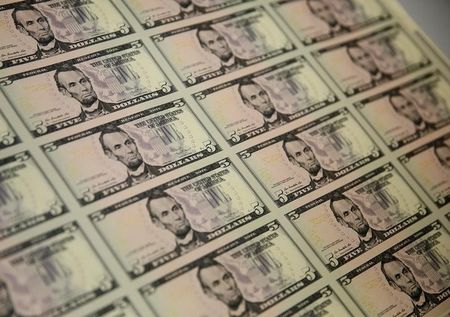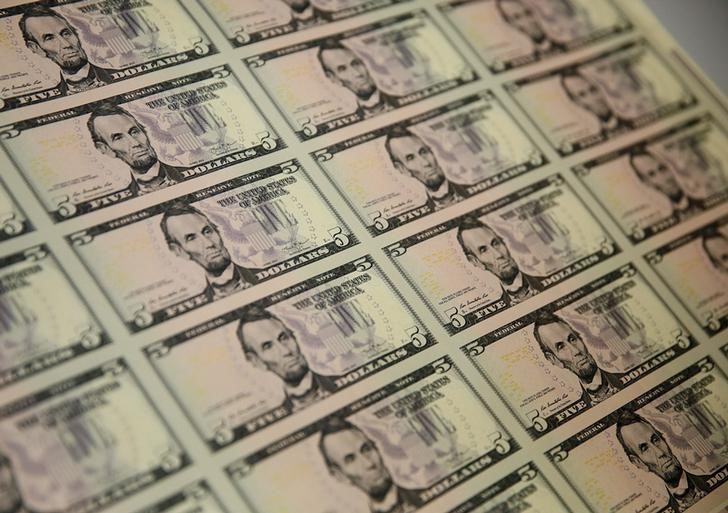Forex
Asia FX rangebound, dollar at 5-mth low as rate cut bets persist


© Reuters.
Investing.com– Most Asian currencies stuck to a tight range on Wednesday, while the dollar languished near five-month lows amid persistent bets that the Federal Reserve will begin cutting interest rates early in 2024.
Regional currencies logged sharp gains in December after the Fed said it was done raising interest rates, with recent suggesting that the bank could trim rates by as soon as March 2024.
But December’s gains only served to trim steep losses in Asian currencies so far this year, as high U.S. interest rates and a largely resilient dollar spurred steady outflows from risk-heavy, high-yielding currencies through the year.
Most Asian units were set for a muted end to 2023, although their outlook appeared somewhat brighter as the Fed flagged plans for interest rate cuts in the coming year. But while markets were optimistic over early cuts, the bank provided little cues on the timing of the planned cuts.
Yen lags, worst-performing Asian currency in 2023
Dovish signals from regional central banks also weighed on some Asian currencies. The fell 0.1% after the summary of opinions of the Bank of Japan’s December meeting showed most policymakers supported keeping monetary policy ultra-dovish in the near-term.
While the central bank has flagged plans to eventually begin tightening policy in 2024, it provided scant cues on the timing of such a move
A dovish BOJ made the yen the worst-performing Asian currency in 2023, with the unit set for an over 8% loss against the dollar this year.
Broader Asian units were also set for an underwhelming performance in 2023, as most regional central banks paused their rate hike cycles this year amid some cooling in inflation. The rose 0.2% on Wednesday and was set to rise 0.2% in 2023. Focus was also on a meeting next week, with the bank widely expected to keep rates on hold.
The was set to lose 0.6% in 2023 after sinking to record lows earlier in the year, while the was down nearly 3% for the year.
The was also among the worst performers for 2023, and was set for a 3.6% loss this year amid worsening sentiment towards the country. A post-COVID economic rebound largely failed to materialize this year.
Focus was now on data for December, due next week, after a series of weak prints over the past three months.
Dollar at 5-mth low, set for underwhelming end to 2023
The and moved little in Asian trade on Wednesday, and remained pinned at five-month lows.
The currency was set to lose nearly 2% in 2023, with a bulk of its losses coming in December after the Fed signaled it was done raising interest rates and will look at cuts in 2024.
The signals saw traders pivoting out of the dollar and into more risk-driven assets.
Markets now expect the , although the bank has given few signals on the breadth of the planned rate cuts.
Fed officials also recently warned that bets on early rate cuts were unfounded, especially as inflation remained sticky.

 Forex3 years ago
Forex3 years agoForex Today: the dollar is gaining strength amid gloomy sentiment at the start of the Fed’s week

 Forex3 years ago
Forex3 years agoUnbiased review of Pocket Option broker

 Forex3 years ago
Forex3 years agoDollar to pound sterling exchange rate today: Pound plummeted to its lowest since 1985

 Forex3 years ago
Forex3 years agoHow is the Australian dollar doing today?

 Cryptocurrency3 years ago
Cryptocurrency3 years agoWhat happened in the crypto market – current events today

 World3 years ago
World3 years agoWhy are modern video games an art form?

 Commodities3 years ago
Commodities3 years agoCopper continues to fall in price on expectations of lower demand in China

 Economy3 years ago
Economy3 years agoCrude oil tankers double in price due to EU anti-Russian sanctions


























